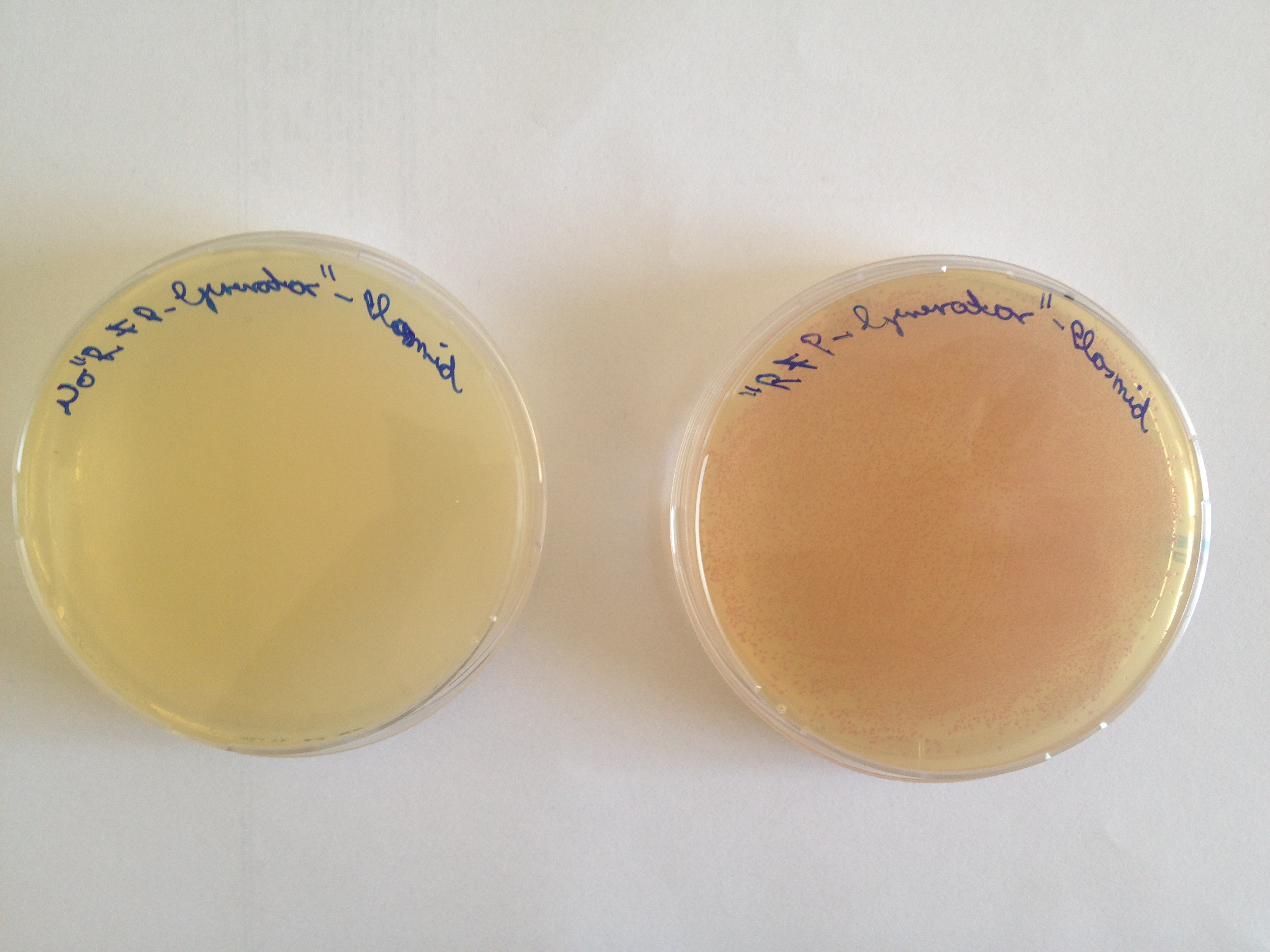Team:TU-Munich/HumanPractice/Education
From 2013.igem.org
Introducing Synthetic Biology Kits at educational institutions
Introduction
It is the first time for a TU Munich iGEM team to prepare „Educational-Kits“, to make it possible for disciples to take the first steps in Synthetic Biology. The idea is to send a kit with all required reagents and lab-protocols, based on the experiments we designed, to educational institutions which are interested in inspiring young prospective people who are planning a career in science. Our experiments are designed in an easy way, so every disciple, independent of training level, is able to understand and take notice of the resulting phenomena which Synthetic Biology makes possible.
The Educational-Kit
The reagents, which are necessary for the realization of the experiments are all found in the kit, except for competent cells, which have to be stored at -20°C. The kit includes the following reagents:
| Reagent | Amount of the Reagent | Is it existent in the kit? |
|---|---|---|
| LB-Medium | Reagents for about 3 L are in the kit | Yes |
| "Banana-Odor"-Plasmid | 100 µl (10 ng/µl) | Yes |
| "RFP-Generator"-Plasmid | 100 µl (10 ng/µl) | Yes |
| "Luciferase"-Plasmid | 100 µl (10 ng/µl) | Yes |
| Isoamylalcohol (>98 %) | 10 ml | Yes |
| Agar plates (Resistance: Kanamycin) | 4 Plates | Yes |
| Agar plates (Resistance: Chloramphenicol) | 2 | Yes |
| L-Arabinose (500 mM) | 3.76 g (50 ml) | Yes |
| Kanamycin | 25 ml | Yes |
| Chloramphenicol | 25 ml | Yes |
| Competent Cells | 6 Tubes (Aliquotvolume: 150 µl) | No |
As you may have noticed, we provide three different plasmids, which are used seperately in each designed experiment. The aim of the experiments is to perform the whole way from transformation, over cultivating cells, inducing the production of proteins and in the end demonstrate the conversion of a substrate by the produced enzyme.
Experiment Number 1
The aim of the first experiment is to transform the "RFP-Generator"-Plasmid into Escherichia coli containing genes coding for Chloramphenicol resistance and a red fluorophor and to plate them on Chloramphenicol-Agarplates. The Agarplates, provided with the antibiotica Chloramphenicol, make a selection process possible, whose aim is to kill all bacteria which have not incorporated the "RFP-Generator"-Plasmid. The expression rate of the red fluorophor is controlled by a constitutive promotor, so the Red fluorescent Protein is expressed continuously. After just about one day of incubation time, the disciples are able to notice a change in colour of the bacteria from ocher to red.
Experiment Number 2
In the second experiment disciples should perform the transformation, learned in experiment one, with the "Luciferase"-Plasmid which encodes genes for Kanamycin resistance and a protein-fluorophor called Luciferase. Another very important point is that the Luciferasegene is subordinated to a L-Arabinose Operon. After the transformation of the DNA-Plasmid has taken place, discicples should learn how to cultivate bacteria in liquid LB-Medium and how to induce protein expression by using L-Arabinose as an inductor of the L-Arabinose promotor. The glow of the Luciferase can be observed after just a couple of hours.
Experiment Number 3
In the third experiment, all aspects learned in the previous experiments come together. They are necessary to understand the following approaches. The "Banana-Odor"-Plasmid encodes an enzyme called Alcohol-Acetyltransferase I. This enzyme is able to convers Isoamylalcohol into Isoamylacetat, which spreads the odor of banana. Additionally there is found a resistance gene for Kanamycin and an inducible L-Arabinose promotor, which controls the expressions rate of the Alcohol-Acetyltransferase I. The disciples should transform the "Banana-Odor"-Plasmid into Escherichia coli, cultivate the successfully transformed bacteria in a bigger scale and in the end, induce the protein expression using L-Arabinose. In the last step, the disciples should add the substrate Isoamylalcohol to the cell culture, so the produced enzyme can transform it into Isoamylacetat.
Target Audience
Our target audience have been secondary schools, which focus a biotechnical educational pathway, so all students have access to the required laboratory equipment for the experiments. Before sending the kits to the schools, we tested them in detail - with success. All schools we contacted, to spread our Synthetic Biology kits, are very enthusiastic concerning our idea of supporting young prospective scientists, so they are very excited to receive and use our kit!
Availability of the School-kit
We appreciate other interested schools in trying our “School kits”. Do not be ashamed of contacting us, so we can supply you with our forward-looking Synthetic Biology “School-kit”!
References
http://www.ncbi.nlm.nih.gov/pubmed/6327079 Edens et al., 1984
- http://www.ncbi.nlm.nih.gov/pubmed/6327079 Edens et al., 1984 Edens, L., Bom, I., Ledeboer, A. M., Maat, J., Toonen, M. Y., Visser, C., and Verrips, C. T. (1984). Synthesis and processing of the plant protein thaumatin in yeast. Cell, 37(2):629–33.
 "
"








AutoAnnotator:
Follow us:
Address:
iGEM Team TU-Munich
Emil-Erlenmeyer-Forum 5
85354 Freising, Germany
Email: igem@wzw.tum.de
Phone: +49 8161 71-4351